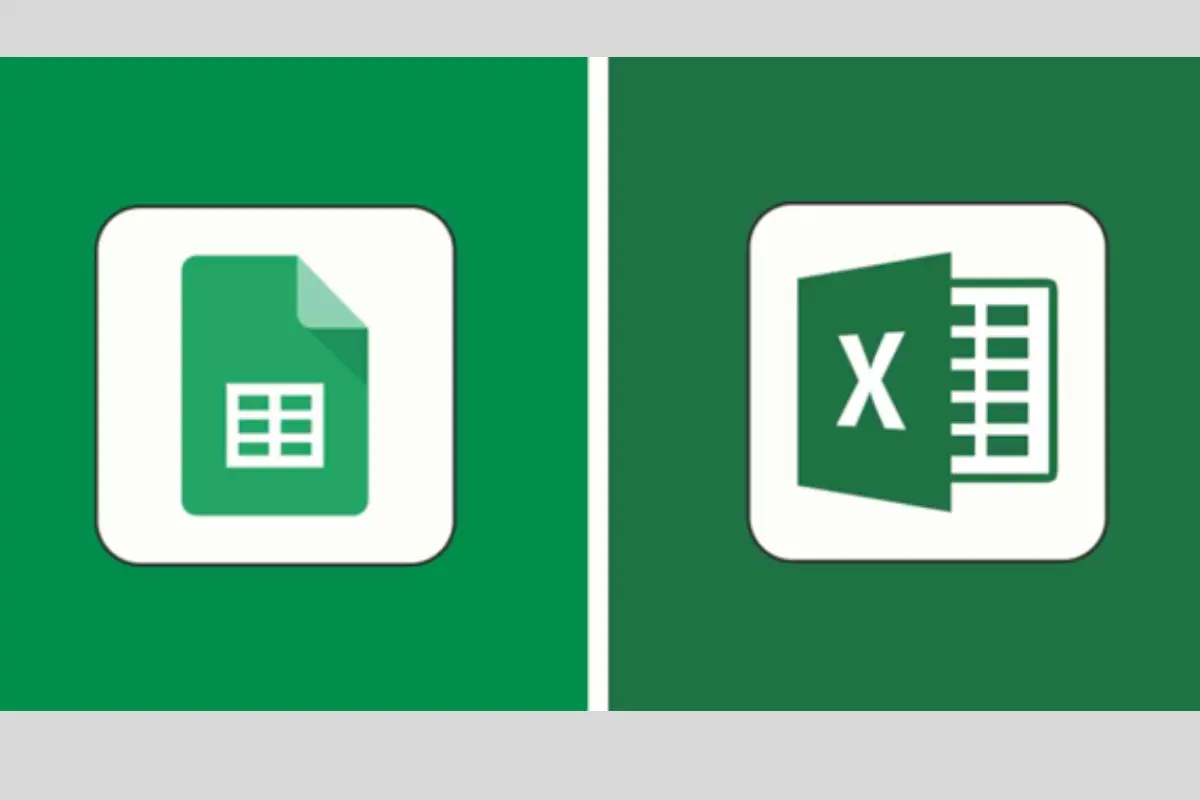Spreadsheets have grown into useful tools for a wide range of personal and professional applications. Google Sheets vs Excel are spreadsheet powerhouses, each with their own set of advantages, disadvantages, and capabilities. We’ll analyze at the major differences, features, and settings in which both popular spreadsheet software shines in our Google Sheets vs. shine comparison.
The Foundation
Google Sheets
Google Sheets stands out as an innovative cloud-based spreadsheet solution designed by Google that is easily integrated into the Google Workspace fabric. This dynamic application, which only works in web browsers, promotes real-time collaboration by allowing numerous users to add to a shared spreadsheet at the same time. The harmonious integration with other Google Workspace counterparts, including Docs and Slides, elevates user convenience to new heights.
Microsoft Excel
Excel, Microsoft’s invention, is a cornerstone in the Microsoft Office suite. Excel is well-known for its advanced capabilities and extensive data analysis and manipulation toolkit. Excel is available as both a desktop application (Excel for Windows and Excel for Mac) and a web-based version called Excel Online.
Accessibility and Teamwork
Google Sheets
Google Sheets’ cloud-centric design is at the forefront, providing access from any device with an internet connection. The real-time collaboration feature stands out, allowing teams to simultaneously change and comment on papers. As a result, Google Sheets is an excellent alternative for collaborative projects, particularly for teams working across geographical borders.
Microsoft Excel
While Excel’s traditional desktop application leans towards offline functionality, the advent of Excel Online brings web-based accessibility to the table. Though supporting collaboration, Excel might not match the seamless real-time updates offered by Google Sheets, adding a layer of complexity to simultaneous editing.
Functionality and Features
Google Sheets
Google Sheets packs a punch with its array of both fundamental and advanced features. Covering standard calculations, charts, and formatting tools, it provides a streamlined experience. Although it may lack some of Excel’s advanced features, Google Sheets excels in simplicity, catering to users who seek essential spreadsheet functionalities without the intricacies of a fully-fledged desktop application.
Microsoft Excel
Excel is a data analysis and processing program noted for its extensive feature set. Due to its support for complicated formulae, pivot tables, macros, and a rich array of charting tools, Excel’s desktop edition is a go-to for professionals dealing with enormous datasets and complex computations. However, the learning curve for newbies may be high.
Integration Across Platforms
Google Sheets
As part of the Google Workspace, Google Sheets connects with other Google products like as Docs, Slides, and Forms. Third-party add-ons offered in the G Suite Marketplace further expand its capabilities, resulting in a dynamic ecosystem.
Microsoft Excel
Excel collaborates with other Microsoft Office products to provide consistency in document creation and collaboration. Support for a variety of third-party add-ins broadens its capability, providing users with new tools and features.
Offline Accessibility
Google Sheets
While Google Sheets offers limited offline functionality through its offline mode, users can enable access to specific documents for viewing and editing without an internet connection. However, the offline capabilities may not match the robustness of Excel’s traditional desktop application.
Microsoft Excel
Excel’s desktop version is intended for offline use, allowing users to create, change, and analyze spreadsheets without connecting to the internet. This is beneficial for individuals who work in locations with little or no internet access.
Price and Accessibility
Google Sheets
Google Sheets has a big financial advantage because it is included in the free Google Workspace Basic plan, which offers 30GB of storage. Subscription subscriptions with extra features are offered with varied cost tiers for organizations and individuals.
Microsoft Excel
Excel is available as a subscription service through the Microsoft 365 suite. To access the desktop version of Excel and unlock extra features, you must subscribe to a Microsoft 365 subscription. While this may be a barrier for budget-conscious customers, the subscription approach guarantees access to the most recent upgrades.
Security and Confidentiality
Google Sheets
The cloud-based nature of Google Sheets raises concerns about data security and privacy. Despite Google’s robust security measures, some customers may be apprehensive to store sensitive data in the cloud, particularly in firms with strict compliance requirements.
Microsoft Excel
Excel, especially the desktop version, allows users to store spreadsheets locally, which alleviates concerns about cloud-based security. Microsoft has integrated strong security precautions into its cloud-based services, such as encryption and adherence to industry regulations.
Conclusion
Personal preferences, needs, and the nature of the project all impact the decision between Google Sheets vs Excel. Because it excels at collaboration, accessibility, and simplicity, Google Sheets is a suitable solution for organizations and individuals looking for a basic spreadsheet. Excel is designed for professionals that deal with complex data analysis and computations because to its comprehensive features, extensive tool set, and offline capabilities.




![F95Zone Games - The Ultimate Guide for 2021 [F95Z Guide] 5 F95Zone Games](https://knowworldnow.com/wp-content/uploads/2021/07/ArTtW5LrK3b-z-0-y-637f48d86203817a9042a857.webp)